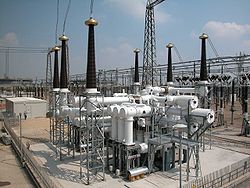Introduction
The first version of SoilModelManager, a new software tool that automates the selection of soil structures that apply during winter or early-spring seasons. SoilModelManager uses resistivity scaling factor curves corresponding to the soil type under study to automatically generate the appropriate soil models for the winter and early–spring seasons, based on the unfrozen soil model.
In regions where the top layer soil can freeze during winter or dry out during summer it is necessary to assess the effects of shallow depth resistivity variations on the grounding design. The recent internationally approved IEC standard 61936-1 entitled Power Installations Exceeding 1 kV ac – Part 1: Common Rules, states clearly in Section 10.3.1 General Clause b:
Determine the (grounding) zone of interest. If not a global earthing system (meaning an urban zone), then determine the soil characteristics of the zone of interest, taking into account theseasonal variation of the soil parameters. |
This requirement means that the designer of a grounding system has the obligation to determine if seasonal soil resistivity variations have an impact on the grounding performance.
Overview of SoilModelManager
It is well known that soil resistivity increases dramatically when the temperature drops below zero degrees Celsius. The resistivity can increase by a factor of 5-1000 times the “summer” value, depending on the temperature, soil material type, moisture content, salinity etc. What resistivity scaling factors should be used for the various top soil layers that are affected by the temperature in a given geographical region when soil freezes? Some have argued that a factor of 5 to 6 would be an adequate average. Others prefer to use a value on the order of 20 or more. The best approach is not to try to use an average value but to emulate the real distribution of resistivity with depth as a function of the temperature at that depth. This is what SoilModelManager does, taking into account the unfrozen (summer) soil model and other relevant information such as meteorological data as provided by the user.
Interface







